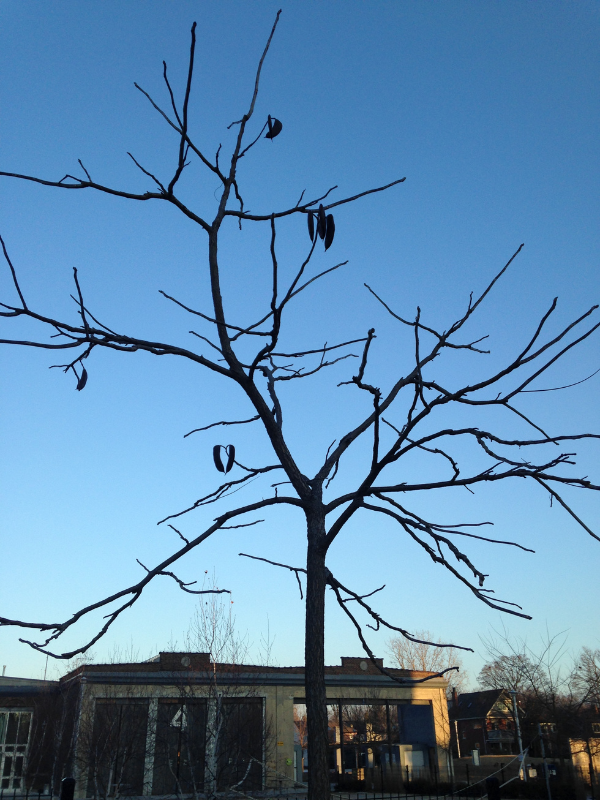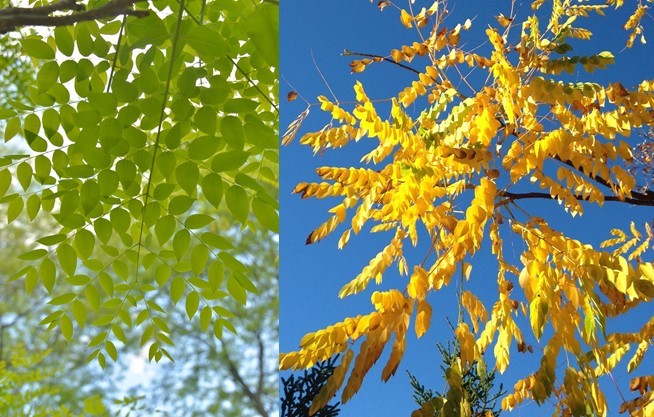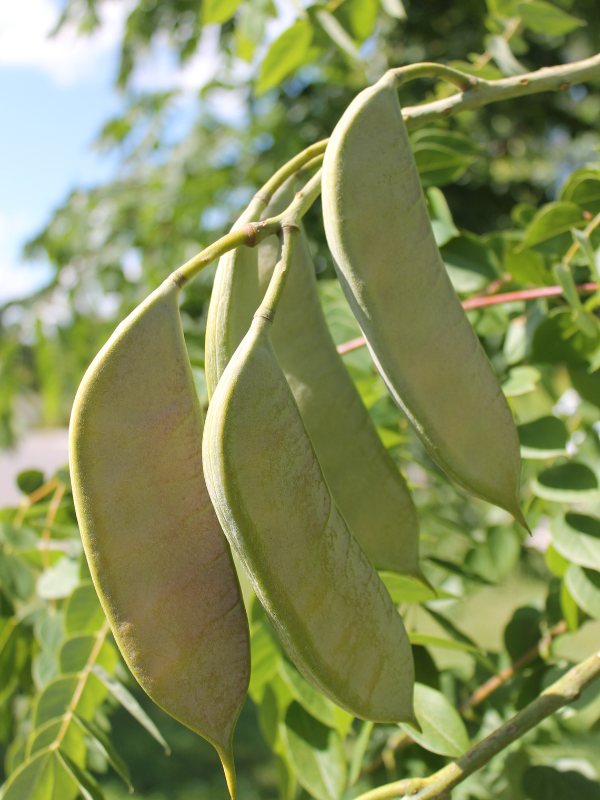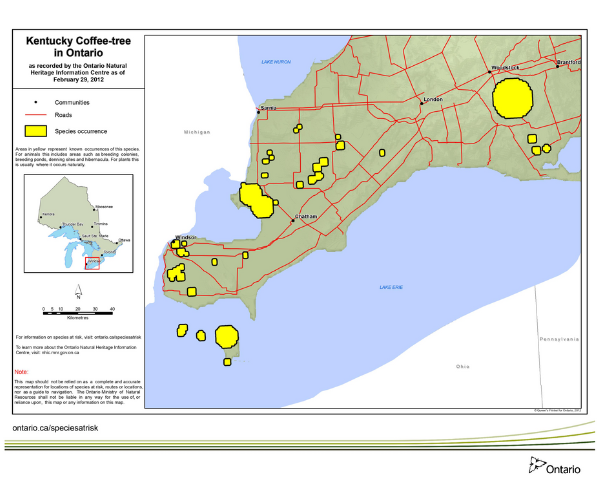The eerily bare look of the Kentucky coffeetree in the fall and winter explains its scientific name perfectly. The Genus Gymnocladus comes from the Greek words gumnos, meaning naked, and klados, meaning branch. This refers to the length of time that the tree holds its foliage (the leaves emerge late in the spring and drop early in the fall), which means the branches remains naked for part of the year! The specific epithet dioicus alludes to the fact that the species is primarily dioecious, meaning that individual trees have either all male or all female flowers. Its common name, Kentucky coffeetree, refers to its seeds, which look like large coffee beans. While the seeds are toxic and should not be eaten raw, historically, they were processed, roasted and ground to make a coffee-like substance that was cheap to make, but was not as tasty.

While the Kentucky coffeetree is often referred to as the naked branch tree, the leaf is ironically one of the largest of all native trees in Canada. Emerging in late spring, the bluish-green leaves are bi-pinnately compound, meaning they are composed of several ovate leaflets that are subdivided into even more leaflets – about 70 in total. This complex leaf structure, however, means that the leaflets are often mistaken for single leaves. As such, when the tree is fully leafed out, it often looks much fuller than its branching structure would suggest, creating highly desirable habitat within the crown for nesting birds! In the fall, the leaves turn a beautiful bright yellow before dropping, at which point the tree transforms back into its haunting winter silhouette.

In late spring, long, greenish-white male and female clusters of flowers emerge on separate trees. The sweet nectar of the flowers is favoured by bumblebees and digger bees, as well as the eastern tiger swallowtail butterfly and the ruby-throated hummingbird – all of which play a crucial role in cross-pollinating the flowers. Female flowers are fragrant and make way for the fruit of the tree – thick, flat, green pods containing round, dark brown seeds embedded in a sticky pulp. The fruit resembles a pea pod, which is fitting, as the tree is a part of the legume (pea) family. In early fall, the pods mature into a dark purple colour and persist on the tree throughout the winter, often resembling ornaments scattered throughout the canopy.

Although the seeds of the Kentucky coffeetree are toxic to most wildlife today, it has been hypothesized that they were once eaten by large herbivorous megafauna during the Pleistocene epoch because they enjoyed the sweet pulp surrounding the seeds. These large mammals had no problems digesting and dispersing the extremely hard seeds, which contributed to expanding the Kentucky coffeetree’s geographic range.
Today however, the federal government’s Committee on the Status of Endangered Wildlife in Canada and the Species at Risk Act has listed the Kentucky coffeetree as a threatened species. The extinction of large herbivores led to a decline in seed dispersal, which has left only a small number of mature trees scattered across 20 locations in southwestern Ontario. Small tree populations, coupled with lower seed production (the Kentucky coffeetree requires male and female trees to be in proximity for cross-pollination), has resulted in the tree’s current threatened status.

Brenna Anstett is the Residential Planting Programs Manager and an ISA certified arborist at LEAF.
LEAF offers a subsidized Backyard Tree Planting Program for private property. The program is supported by the City of Toronto, the Regional Municipality of York, the City of Markham, the Town of Newmarket, the Regional Municipality of Durham, the Town of Ajax, the Township of Brock, the Municipality of Clarington, the City of Oshawa, the City of Pickering, the Township of Scugog, the Town of Whitby, Ontario Power Generation, Ontario Trillium Foundation and GrandTrees/Canadian Trees For Life.
